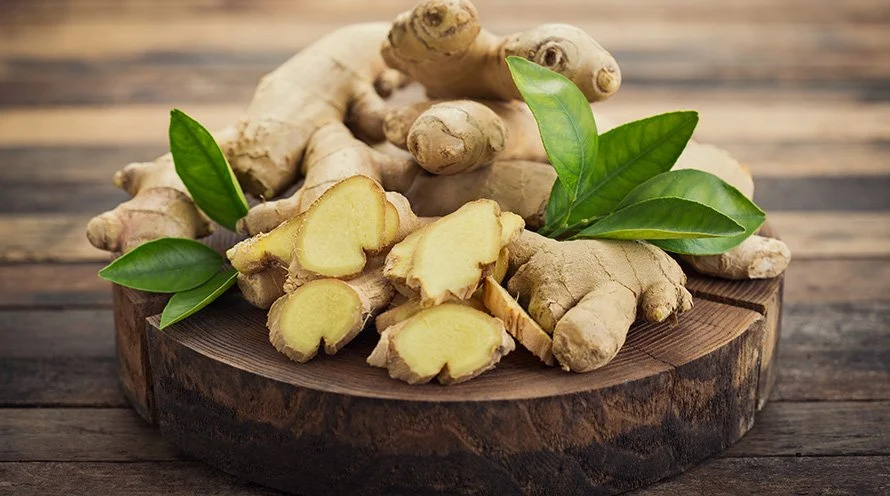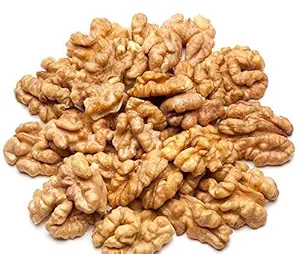Ginger Tea: A Natural Remedy for Period Bloating – An Indian Youth’s Guide
Menstrual cycles can be challenging, with cramps, mood swings, and the infamous bloating making it hard to function at your best.
If you’re an Indian youth juggling studies, work, and social commitments, the added discomfort of period bloating can feel like an unwelcome guest. But what if the solution lies in your kitchen?
According to age-old wisdom—something our mothers have always known—ginger tea is a simple, effective remedy for easing period bloating.
This blog delves into why ginger tea is a go-to solution for menstrual bloating and how it aligns with the lifestyle of Indian youth. Let’s explore how this golden elixir can make your period days a little easier.
Understanding Period Bloating
Period bloating occurs due to hormonal fluctuations, particularly increased levels of estrogen and progesterone. These hormones cause water retention, which leads to a feeling of puffiness or tightness, especially around the abdomen.
While bloating is a normal part of the menstrual cycle, it can be uncomfortable and frustrating.
Why Do Indian Youth Face More Challenges?
As a young Indian, you may already have a hectic lifestyle, balancing academics, work, or other responsibilities. Add to this the cultural expectations and dietary habits that sometimes lean heavily on processed foods, salt, or caffeine—all of which can exacerbate bloating.
Furthermore, in many Indian households, discussing menstruation with male family members is still considered taboo. Some deeply ingrained cultural practices also restrict women during their menstrual cycle, such as not allowing them to enter the kitchen or sleep in a proper bed.
These emotionally distressing practices can, in turn, cause stress, leading to the release of cortisol, a stress hormone that worsens physical discomfort, including bloating.
This is where natural remedies like ginger tea can make a significant difference.
Why Ginger Tea Works Wonders for Period Bloating
1. Anti-inflammatory Properties
Ginger contains powerful anti-inflammatory compounds called gingerols and shogaols. These help reduce the inflammation in the gut, relieving bloating and soothing abdominal discomfort.
2. Promotes Digestive Health
Bloating often stems from digestive issues like slow metabolism or gas buildup. Ginger tea stimulates the digestive enzymes, aiding in faster digestion and reducing gas.
3. Diuretic Effect
Ginger tea has mild diuretic properties that help flush out excess water from the body, reducing water retention and puffiness.
4. Hormonal Balance
Ginger may also play a role in regulating hormones, helping reduce the severity of period symptoms, including bloating, cramps, and mood swings.
5. Warmth and Comfort
A hot cup of ginger tea provides warmth and relaxation, which can ease period discomfort and elevate your mood during challenging days.
Ginger Tea for Period Bloating: Step-by-Step Approach with External Resources
Here’s how you can implement ginger tea as a remedy for period bloating, broken down into actionable steps. Additionally, external links provide deeper insights and credibility.
Step 1: Understand the Science Behind Ginger and Menstrual Health
Before diving into remedies, it’s helpful to understand why ginger is effective for bloating and menstrual discomfort. Research confirms its anti-inflammatory, digestive, and hormone-regulating properties.
External Resources:
Step 2: Gather Ingredients
Head to your kitchen or a local grocery store to gather the following ingredients:
- Fresh ginger root
- Water
- Optional: honey, lemon, or additional spices like cardamom
External Resources:
- BBC Good Food: Why Fresh Ginger Is Better Than Powder
- Times of India: Ginger Benefits in Indian Cooking
Step 3: Prepare Ginger Tea
Follow this quick recipe:
- Boil 2 cups of water in a pan.
- Grate or thinly slice 1-2 inches of fresh ginger.
- Add the ginger to the boiling water and let it simmer for 5-7 minutes.
- Strain the tea into a cup.
- Add a teaspoon of honey or a squeeze of lemon for extra flavor.
External Resources:
Step 4: Drink Responsibly
Consume ginger tea once or twice a day during your menstrual cycle. Avoid drinking excessive amounts, as it can lead to acidity or heartburn in some individuals.
External Resources:
Step 5: Pair Ginger Tea with Lifestyle Adjustments
For maximum relief, complement ginger tea with:
- Hydration: Drink at least 2-3 liters of water daily.
- Diet: Include fiber-rich foods and avoid salty snacks.
- Light Exercise: Try yoga or gentle stretching exercises.
External Resources:
Step 6: Monitor the Results
Keep track of how ginger tea affects your period symptoms over a few cycles. If the bloating significantly reduces, incorporate it into your routine. However, if symptoms persist, consult a healthcare provider.
External Resources:
- WebMD: When to See a Doctor for Menstrual Symptoms
- National Library of Medicine: Gut Health and Hormonal Cycles

Quick Overview of the Steps to Use Ginger Tea for Period Bloating
- Understand the Science Behind Ginger
Ginger’s anti-inflammatory and digestive properties make it effective for easing period bloating. Its ability to regulate hormones also helps reduce discomfort during your menstrual cycle. - Gather the Ingredients
You’ll need fresh ginger root, water, and optional ingredients like honey, lemon, or cardamom for added flavor. - Prepare Ginger Tea
Boil 2 cups of water, add grated or sliced ginger, and let it simmer for 5-7 minutes. Strain into a cup and add honey or lemon if desired. - Drink Responsibly
Drink ginger tea once or twice a day during your period, but avoid overconsumption to prevent acidity or heartburn. - Pair with Lifestyle Adjustments
Stay hydrated, eat fiber-rich foods, and engage in light exercise like yoga to enhance the effectiveness of ginger tea in reducing bloating. - Monitor the Results
Track how your symptoms change over a few cycles. If bloating decreases, continue using ginger tea. If symptoms persist, consult a healthcare provider.
By following these simple steps, you can naturally manage period bloating and stay connected to time-tested, culturally rooted remedies.
When and How Often Should You Drink Ginger Tea?
For best results, drink ginger tea:
- 1-2 times a day during your menstrual cycle, especially when bloating is at its peak.
- First thing in the morning on an empty stomach or in the evening for a calming effect.
Avoid overconsumption, as too much ginger can sometimes cause heartburn or acidity.
The Cultural Connection: Wisdom Passed Down
In Indian households, natural remedies like ginger tea have been trusted for generations. Whether it’s curing a sore throat or soothing an upset stomach, ginger holds a revered place in Ayurvedic medicine. Our mothers and grandmothers often know the value of these age-old practices, even when modern science is just catching up.
As Indian youth, incorporating these traditional remedies into your lifestyle allows you to stay connected to your roots while addressing modern-day health challenges.
Why Ginger Tea Fits the Lifestyle of Indian Youth
- Quick and Easy to Prepare: With minimal ingredients and effort, ginger tea can be made in minutes, making it perfect for busy students or young professionals.
- Affordable and Accessible: Ginger is readily available in most Indian kitchens, making this remedy cost-effective and convenient.
- Customizable Flavor: You can experiment with add-ons like cardamom, cinnamon, or tulsi to suit your taste preferences.
- Holistic Wellness: Beyond bloating, ginger tea helps with cramps, nausea, and even stress—common challenges faced by Indian youth.
Additional Tips to Combat Period Bloating
While ginger tea is an excellent remedy, combining it with a healthy lifestyle can enhance its effects:
- Stay Hydrated: Drink plenty of water to prevent water retention.
- Reduce Salt Intake: Avoid salty snacks, which can worsen bloating.
- Eat Fiber-Rich Foods: Include fruits, vegetables, and whole grains in your diet to promote digestion.
- Exercise Gently: Yoga and light stretches can help alleviate bloating and cramps.
- Limit Caffeine: Replace coffee with herbal teas like ginger, chamomile, or peppermint during your period.
Conclusion: A Cup of Comfort
Ginger tea is more than just a beverage—it’s a cup of comfort, offering relief from period bloating and other menstrual woes. As an Indian youth navigating the complexities of modern life, embracing this traditional remedy can be a game-changer for your overall well-being.
The next time your period brings along bloating, listen to your mom’s advice and brew yourself a warm, soothing cup of ginger tea. It’s a small act of self-care that can make a big difference.
So, why wait? Give ginger tea a try and experience its magical benefits for yourself!
Disclaimer:
The information provided in this blog is intended for general informational purposes only. While ginger tea has been traditionally used in Ayurvedic medicine and has some proven health benefits, it should not be considered a substitute for professional medical advice, diagnosis, or treatment. Always consult with a healthcare provider before making any significant changes to your diet, especially if you have underlying health conditions or are taking medications.
Individual results may vary, and excessive consumption of ginger can lead to side effects such as heartburn or gastrointestinal discomfort. Please consume ginger tea in moderation.
The external resources linked in this article are for reference purposes and do not necessarily reflect the views or recommendations of the author.
-

Nuts and Legumes: A Surprising Connection Explained (And Why It Matters to Your Diet)
Table of Contents
Nuts and Legumes: A Surprising Connection Explained (And Why It Matters to Your Diet)
Have you ever wondered why peanuts aren’t actually nuts? Or why almonds and lentils sit in entirely different aisles at the grocery store despite both being plant-based powerhouses? The relationship between nuts and legumes is full of twists, myths, and nutritional goldmines. Let’s unravel the truth behind these foods—and discover how to make the most of them in your kitchen.
1. Botanical Classification: Why Peanuts Are Imposters (And Other Fun Facts)
Let’s settle the debate: Are nuts legumes? The short answer? No—but the lines blur more than you’d think.
Legumes are plants that grow in pods, like beans, lentils, and peas. Their fruits split open naturally to release seeds (think of a pea pod cracking open), as highlighted in the USDA’s official classification of legumes. Nuts, however, are hard-shelled fruits that don’t split open. For example, a walnut’s shell stays intact unless you crack it with a nutcracker.
But here’s where it gets juicy: Peanuts are legumes. Yes, that’s right! They grow underground in pods, just like chickpeas. Meanwhile, almonds, cashews, and pistachios? They’re technically “drupes” (a type of fruit with a hard stone). Confused yet? You’re not alone! According to Kew Science, there are over 18,000 legume species—from humble lentils to carob trees!
Why does this matter?
- Allergies: Peanut allergies differ from tree nut allergies because of their botanical roots (FARE guidelines).
- Cooking: Legumes like lentils cook faster than dense nuts, which are often roasted or eaten raw.
- Farming: Legumes enrich soil with nitrogen, making them eco-friendly crops, as noted in this FAO report on legume sustainability.
Pro Tip: Next time you snack on peanuts, remember: You’re eating a legume in disguise. For more on unique nut varieties, explore our guide to nutritious nuts from India.
2. Seeds: The Tiny Powerhouses Fueling Your Body
Both nuts and legumes rely on seeds—nature’s perfect energy capsules. Seeds store nutrients to help plants grow, which is why they’re packed with protein, fiber, and healthy fats.
Nuts: Think of seeds in armor. Almonds, for example, are seeds protected by a tough shell. They’re rich in vitamin E and magnesium, as Harvard’s research on nuts confirms.
Legumes: Lentils and chickpeas are essentially “naked seeds” from pods. They’re loaded with folate and iron, making them a staple in diets worldwide, per the Mayo Clinic’s legume guide.What’s Inside a Seed?
- Protein: A handful of pumpkin seeds provides 8–10 grams—perfect for plant-based diets.
- Fiber: Chia seeds (yes, technically a legume!) have 10 grams per ounce.
- Healthy Fats: Walnuts are bursting with omega-3s, which fight inflammation, as shown in clinical trials from Nutrition Journal.
Key Statistic: Seeds can deliver 50% of your daily protein and fiber needs in just one serving!
Recipe Hack: Blend Brazil nuts into smoothies for a selenium boost (check NIH’s selenium guidelines).
3. Nutritional Showdown: Nuts vs. Legumes
Let’s compare these two heavyweights:
Nutrient Nuts (per 1 oz) Legumes (per ½ cup cooked) Protein 4–7g (Almonds: 6g) 7–9g (Lentils: 9g) Fiber 2–4g (Pistachios: 3g) 6–8g (Black beans: 8g) Healthy Fats 13–20g (Macadamias: 21g) 0.5–1g (Chickpeas: 2g) Iron 6% DV (Cashews) 20% DV (Lentils) The Verdict:
- Nuts = Fats + crunch. Perfect for snacks and baking.
- Legumes = Protein + fiber. Ideal for meals like soups and salads.
Health Perks:
- Heart Health: Almonds lower LDL cholesterol, as Harvard’s research highlights.
- Blood Sugar: Lentils’ slow-digesting carbs prevent spikes, per a PMC study on legumes.
- Cancer Prevention: Walnuts contain antioxidants linked to reduced cancer risk.
Key Statistic: Regular nut/legume eaters have a 20% lower risk of heart disease.
Try This: Swap croutons with roasted chickpeas in salads. For decadent recipes, try our white chocolate macadamia cookies.
4. Cooking Hacks: How to Use Nuts and Legumes Like a Pro
These ingredients are kitchen chameleons. Here’s how to maximize their potential:
For Nuts:
- Toast them: Enhances flavor (350°F for 8–10 minutes).
- Make nut butter: Blend roasted peanuts or almonds with a pinch of salt (see BBC’s nut recipes).
- Substitute flour: Almond flour adds richness to gluten-free baking.
For Legumes:
- Batch cook: Freeze cooked beans for quick meals.
- Mash them: Lentil patties or hummus are crowd-pleasers (inspired by Serious Eats’ legume dishes).
- Sprout them: Boost nutrient absorption by sprouting mung beans.
Global Inspirations:
- Middle Eastern: Falafel (chickpeas) with tahini sauce.
- Asian: Stir-fried cashew chicken.
- Mexican: Black bean tacos with avocado, as featured in Bon Appétit’s sustainable recipes.
Key Statistic: Nuts and legumes star in over 60% of global cuisines—from Ethiopian stews to Italian pesto.
Craving More? Discover quirky uses in our mochi nuts facts post.
5. The Planet-Friendly Choice: Sustainability Secrets
Nuts and legumes aren’t just good for you—they’re kind to Earth:
- Legumes: Their roots fix nitrogen in soil, reducing fertilizer needs (FAO report).
- Nuts: Almond farms support bee populations (they pollinate the trees!), as noted by the WWF’s sustainable agriculture insights.
Eco-Tip: Choose locally grown lentils over imported ones to cut carbon footprints.
Final Thoughts: Why This Debate Matters to Your Plate
Whether you’re team almond or team lentil, both nuts and legumes deserve a spot in your diet. They’re affordable, versatile, and pack a nutritional punch that meat can’t match.
Did You Know? Together, nuts and legumes provide 15% of the world’s protein—helping combat global food insecurity, per the FAO’s traditional crops database.
Your Challenge This Week:
- Swap meat for lentils in one meal.
- Try a new nut butter (hello, pecan!).
- Share your creation on social media—tag us!
For more inspiration, explore our list of best dry fruits and nuts for lazy evenings.
Hungry for More?
- Dive into the benefits of macadamia nuts.
- Learn how to make protein-packed legume curries.
Remember: Whether it’s a walnut or a lentil, every bite brings you closer to a healthier, greener planet. Now go crack open some seeds (or pods)! 🌱🥜
-

Where Do Pine Nuts Originate From? A Journey of Delicious Delicacy
Table of Contents
Uncover the Origin of Pine Nuts: A Culinary Exploration
Pine nuts,as you know, they are delicate seeds hidden within pine cones. These tiny, buttery seeds hidden inside pine cones—have been delighting taste buds for thousands of years. But these little gems aren’t just a tasty ingredient; they tell a fascinating story of history, nature, and culture.
Let’s dive into their origins, how they’re harvested, and why they’ve been treasured across civilizations.
Ancient Origins: A Timeless Delicacy
People have been enjoying pine nuts for over 8,000 years! Archaeologists have found them in ancient caves, proving that early humans valued them as a nutritious and delicious food. Different cultures around the world embraced pine nuts in unique ways:

- Egyptians placed them in tombs as food for the afterlife.
- Romans and Greeks loved adding them to sauces, wines, and meals for their rich taste and health benefits.
- Chinese healers believed pine nuts could boost energy and aid digestion.
- Native American tribes, like the Navajo and Paiute, relied on pine nuts as a key source of protein, grinding them into flour or eating them raw.
It’s no surprise that pine nuts have stood the test of time. Their delicious, buttery flavor and impressive nutritional value make them a favorite snack and ingredient even today!
Did you know? : Pine nut consumption dates back at least 8,000 years, evidenced by charred shells found in Nevada’s Great Basin. Dive deeper into the history of nuts with India’s ancient varieties →
Pine Tree Species: A Diverse Family
Not all pine trees produce edible nuts. Of the 120+ pine species worldwide, only about 20 yield nuts suitable for human consumption. Each species has its own unique characteristics, influenced by the climate and soil of its native region.
- Mediterranean Stone Pine (Pinus pinea): Known for its large, elongated nuts, this species is the primary source of pine nuts used in Italian pesto and Spanish desserts.
- Pinyon Pines (Pinus edulis and Pinus monophylla): Native to the American Southwest, these trees produce smaller, sweeter nuts that were a staple for Native American tribes.
- Korean Pine (Pinus koraiensis): Widely cultivated in China and Korea, these nuts are a key ingredient in Asian cuisine, particularly in sauces and desserts.
- Chilgoza Pine (Pinus gerardiana): Found in the Himalayan region, chilgoza nuts are prized for their rich, resinous flavor and are often eaten roasted.
Understanding these variations is key to appreciating the difference in flavors and qualities of different pine nuts.
Discover quirky nut facts in our article on Mochi nuts →
Global Cultivation: A Culinary Journey
Pine nuts are cultivated in various regions worldwide, each contributing unique characteristics to the final product. Climate and soil conditions play a significant role in their growth and yield, impacting everything from the size and shape of the nuts to their overall flavor profile.
- China: The world’s leading producer, China harvests over 15,000 tons annually, primarily from the Korean pine.
- Mediterranean Region: Italy and Spain are famed for their stone pine nuts, which are larger and have a mild, buttery flavor.
- United States: The American Southwest’s pinyon pines contribute a smaller, artisanal crop, cherished for their sweet, earthy taste.
- Himalayas: Pakistan and Afghanistan produce chilgoza nuts, which are labor-intensive to harvest but highly valued for their unique flavor.
However, climate change poses a significant threat to pine nut production. Rising temperatures and unpredictable weather patterns can disrupt the delicate balance required for pine trees to thrive.
China produces over 75% of the world’s pine nuts, supplying most commercial demand.
Whip up pine nut-infused treats with our banana nut muffin recipes →
Harvesting Techniques: Preserving Nature’s Bounty
Harvesting pine nuts is a labor-intensive process that requires patience and skill. Pine cones take up to three years to mature, and the seeds must be carefully extracted to preserve their quality.
- Traditional Methods: In many regions, pine cones are collected by hand using long poles. The cones are then dried in the sun to release the seeds, which are shelled manually.
- Modern Innovations: Some producers use mechanical shakers to harvest cones, but manual labor remains essential for ensuring the nuts are not damaged.
- Sustainability Challenges: Overharvesting and pests like the Leptoglossus bug have led to shortages, driving prices to ~$100 per pound. Sustainable practices, such as rotational harvesting and reforestation, are crucial to protect these slow-growing trees.
It takes 18–25 years for a pine tree to produce harvestable cones.
Explore snack-worthy nuts for cozy evenings →
Culinary Delights: A Versatile Ingredient
Pine nuts’ versatility in the culinary world is undeniable. Their rich, buttery flavor and crunchy texture make them a prized ingredient in countless dishes worldwide.
- Classic Pesto: Pine nuts are a key ingredient in traditional Italian pesto, blended with basil, garlic, Parmesan, and olive oil.
- Middle Eastern Cuisine: Toasted pine nuts are sprinkled over hummus, salads, and rice dishes like mansaf.
- Desserts: In Italy, pine nuts are used in pignoli cookies, while in Spain, they are added to tarta de piñones (pine nut tart).
- Health Benefits: Pine nuts are a rich source of healthy fats, protein, and essential nutrients like magnesium and vitamin E.
However, beware of “pine mouth,” a rare reaction to certain Asian varieties that can cause a metallic aftertaste lasting several days.
A 1-ounce serving of pine nuts provides 19g of fat (mostly unsaturated) and 4g of protein.
Elevate your recipes with our curated mixed nuts guide →
Conclusion: A Treasure Worth the Splurge
From ancient rituals to gourmet plates, pine nuts embody culinary luxury. Their steep price reflects the meticulous labor required to harvest them and the slow pace at which pine trees grow. Yet, their unmatched flavor and versatility make them a worthy indulgence.
As we continue to explore the world of pine nuts, it’s essential to support sustainable practices that protect these precious trees for future generations. Whether you’re sprinkling them over a salad, blending them into pesto, or baking them into cookies, pine nuts offer a taste of history and a connection to the natural world.
Did You Know? Pine nuts are among the world’s most expensive nuts, costing up to $100 per pound due to labor-intensive harvesting and limited supply.
Join us in celebrating pine nuts—tiny seeds with an epic story. 🌰✨
Reference:
- History & Origins of Pine Nuts
- National Geographic on ancient nut consumption: https://www.nationalgeographic.com/food/nuts-and-human-history
- Archaeological findings of pine nuts in ancient cultures: https://www.sciencedaily.com/releases/2020/06/200604112652.htm
- Pine Nut Harvesting & Sustainability
- FAO (Food and Agriculture Organization) report on global pine nut production: https://www.fao.org/forestry/nwfp/10303/en/
- Climate change impact on pine nut production: https://www.theguardian.com/environment/2021/nov/18/pine-nuts-endangered
- Culinary Uses & Recipes
- Traditional Italian pesto recipe: https://www.bonappetit.com/recipe/classic-pesto
- Middle Eastern dishes with pine nuts: https://www.saveur.com/middle-eastern-pine-nut-dishes
- Pine Nut Nutrition & Health Benefits
- USDA nutrition facts for pine nuts: https://fdc.nal.usda.gov/fdc-app.html#/food-details/170395/nutrients
- Medical studies on pine nut health benefits: https://www.ncbi.nlm.nih.gov/pmc/articles/PMC4564023/
-

Discover the 7 Types of Tree Nuts: Unlocking Nutrition and Flavor
Table of Contents
Tree nuts are nature’s bite-sized powerhouses, packed with heart-healthy fats, plant-based protein, fiber, and essential vitamins and minerals. From almonds to Brazil nuts, each variety offers unique benefits, whether you’re aiming to boost brain function, support heart health, or simply enjoy a satisfying snack. In this guide, we’ll explore the top 7 tree nuts, their science-backed benefits, and creative ways to incorporate them into meals. Let’s dive in!
Why Are Tree Nuts Good for You?
Before we explore individual nuts, let’s understand why tree nuts are a must-add to your diet:
- Rich in Healthy Fats: Monounsaturated and polyunsaturated fats (like omega-3s) reduce inflammation and support cardiovascular health.
- High in Fiber: Aids digestion, stabilizes blood sugar, and promotes satiety.
- Packed with Antioxidants: Combat oxidative stress and protect against chronic diseases.
- Vitamins & Minerals: Magnesium, vitamin E, selenium, and zinc play critical roles in immunity and metabolism.
According to Harvard T.H. Chan School of Public Health, consuming nuts daily is linked to a 20% lower risk of heart disease. Ready to meet the superstars?
1. Almonds: The Vitamin E Champion
Health Benefits of Almonds

Almonds are a crunchy, versatile nut loaded with vitamin E, a fat-soluble antioxidant that protects cells from damage. Studies show they may:
- Lower LDL (“bad”) cholesterol.
- Regulate blood sugar levels due to their magnesium and fiber content.
- Support skin health by reducing UV-induced oxidative stress.
Almond Nutrition Facts (1 oz serving):
- Calories: 164
- Protein: 6g
- Healthy Fats: 14g (9g monounsaturated)
- Fiber: 3.5g
- Vitamin E: 48% of the Daily Value (DV)
How to Use Almonds
- Snack Smart: Pair raw almonds with fruit for a balanced snack.
- Recipe Idea: Blend into almond butter or use almond flour in baking. Try our banana nut muffins recipe for a fiber-rich treat.
Pro Tip: Soak almonds overnight to enhance nutrient absorption!
2. Walnuts: Brain-Boosting Omega-3 Powerhouse
Health Benefits of Walnuts

Walnuts are the only tree nut significantly high in alpha-linolenic acid (ALA), a plant-based omega-3 fatty acid. Benefits include:
- Improved cognitive function and reduced risk of neurodegenerative diseases.
- Enhanced heart health by lowering blood pressure and inflammation.
- Gut health support through their prebiotic properties.
Walnut Nutrition Facts (1 oz serving):
- Calories: 185
- Omega-3s: 2.5g
- Protein: 4g
- Antioxidants: High in polyphenols
How to Use Walnuts
- Salads: Toasted walnuts add crunch to spinach or beetroot salads.
- Baking: Substitute flour with ground walnuts for low-carb desserts.
Did You Know? Walnuts resemble the human brain—a fun nod to their brain-boosting benefits!
3. Pecans: The Antioxidant-Rich Sweet Treat
Health Benefits of Pecans
Pecans are rich in ellagic acid, an antioxidant linked to cancer prevention. They also:
- Support metabolic health by improving insulin sensitivity.
- Promote healthy aging due to their high manganese content (aids collagen production).
Pecan Nutrition Facts (1 oz serving):
- Calories: 196
- Fiber: 2.7g
- Vitamin A: 2% DV
- Manganese: 56% DV
How to Use Pecans
- Desserts: Classic pecan pie or energy balls.
- Savory Dishes: Crushed pecans as a coating for fish or chicken.
For more ideas, explore our 10 Best Dry Fruits and Nuts for Lazy Evenings.
4. Pistachios: The Low-Calorie Snacking Gem
Health Benefits of Pistachios

Pistachios stand out for their lower calorie count and vibrant green hue (from lutein and zeaxanthin). They:
- Aid weight management by promoting fullness.
- Improve eye health and reduce oxidative stress.
Pistachio Nutrition Facts (1 oz serving):
- Calories: 159
- Protein: 6g
- Fiber: 3g
How to Use Pistachios
- Trail Mix: Combine with dried cranberries and dark chocolate.
- Dips: Blend into pesto or hummus for extra creaminess.
Recipe Alert: Try our 10 White Chocolate Macadamia Nut Cookies, substituting macadamias with pistachios!
5. Cashews: The Creamy Immunity Booster
Health Benefits of Cashews
Cashews are prized for their creamy texture and high zinc content, which:
- Strengthens immune function.
- Supports bone health with magnesium and copper.

Cashew Nutrition Facts (1 oz serving):
- Calories: 157
- Monounsaturated Fats: 8g
- Zinc: 15% DV
How to Use Cashews
- Dairy-Free Cream: Soak and blend into sauces or vegan cheesecakes.
- Stir-Fries: Add for crunch in Asian-inspired dishes.
Learn more about macadamia nut benefits for gourmet recipe swaps.
6. Macadamia Nuts: The Heart-Healthy Luxury
Health Benefits of Macadamia Nuts
Macadamias are rich in palmitoleic acid, a monounsaturated fat that:
- Reduces inflammation and LDL cholesterol.
- Enhances brain function and mood regulation.
Macadamia Nutrition Facts (1 oz serving):
- Calories: 204
- Healthy Fats: 21g
- Thiamine: 22% DV
How to Use Macadamia Nuts
- Desserts: White chocolate macadamia cookies.
- Coffee: Blend into bulletproof coffee for a creamy texture.
Pro Tip: Store macadamias in the fridge to prevent rancidity.
7. Brazil Nuts: The Selenium Superstar
Health Benefits of Brazil Nuts
Just one Brazil nut provides 175% of your daily selenium needs, crucial for:
- Thyroid hormone metabolism.
- Antioxidant defense via glutathione production.
Brazil Nut Nutrition Facts (1 nut):
- Calories: 33
- Selenium: 175% DV
- Magnesium: 8% DV
How to Use Brazil Nuts
- Snack: Limit to 1-2 nuts daily to avoid selenium toxicity.
- Energy Bites: Blend with dates and cocoa powder.
Explore 5 Brazil Nut Benefits for more ways to enjoy them!
How to Incorporate Tree Nuts Into Your Diet
Simple Tips:
- Morning Boost: Add chopped nuts to oatmeal or smoothie bowls.
- Salad Toppers: Replace croutons with toasted nuts.
- Nut Butters: Opt for unsweetened varieties on whole-grain toast.
Allergy Considerations:
- Always check labels for cross-contamination warnings.
- Substitute seeds (e.g., sunflower, pumpkin) if allergic.
FAQs About Tree Nuts
Q: How many nuts should I eat daily?
A: A handful (1 oz or 28g) is ideal for most adults.Q: Are roasted nuts healthy?
A: Choose dry-roasted or raw nuts without added salt or sugar.Q: Can nuts help with weight loss?
A: Yes! Their protein and fiber content curbs overeating.
Conclusion: Go Nuts for Better Health!
From almonds’ vitamin E to Brazil nuts’ selenium, each tree nut brings unique benefits to the table. Whether you’re snacking, baking, or cooking, these nutrient-dense gems are a delicious way to enhance your wellness journey. Ready to get creative? Start with our 5 Must-Have Mixed Nuts guide or experiment with nut-based recipes today!
Loved this guide? Share it with a friend or explore our DIY Home Organization Decor tips for a healthier lifestyle!








Leave a Reply